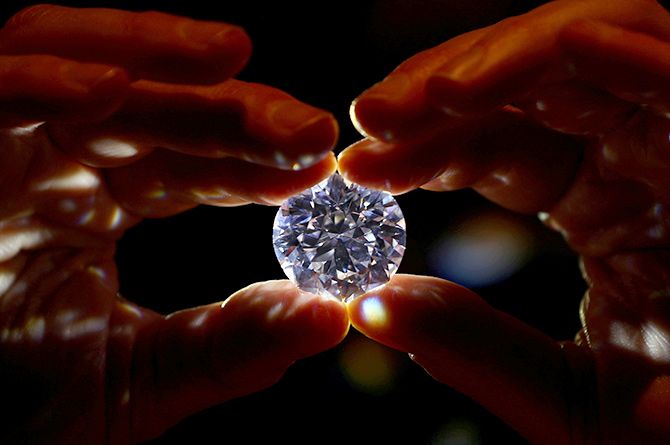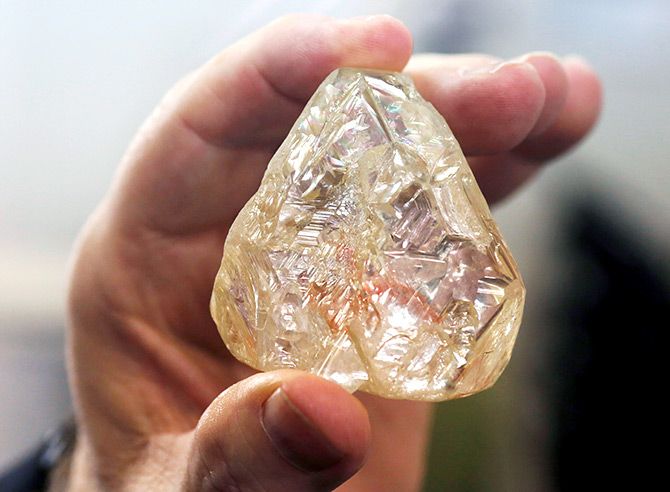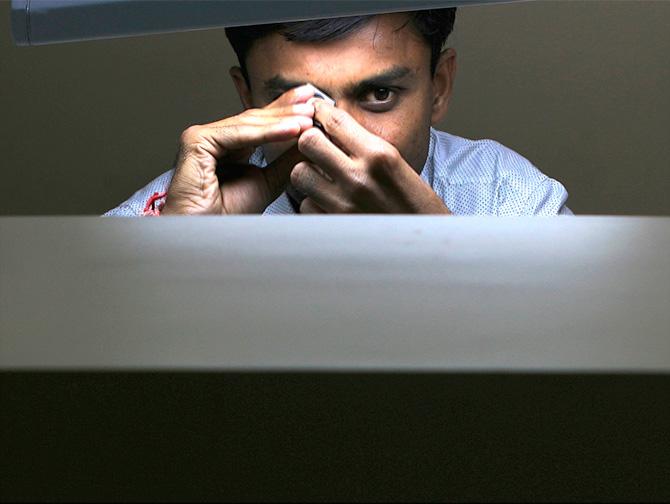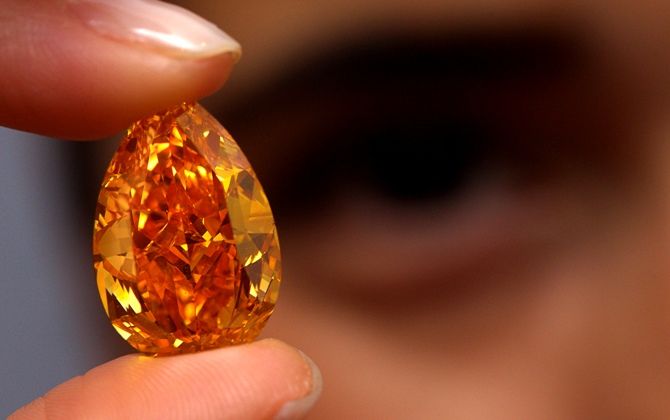The spotlight is back on the hawala trade in diamonds.
With the diamond industry going through a rough patch and two of its big names -- Mehul Choksi and Nirav Modi -- accused of fraudulent activities, the issue of illegitimate channels such as hawala and round tripping of diamonds are again gaining prominence.
India exports polished diamonds worth around $35 billion a year. It is the biggest processor of rough diamonds.
When imports of polished diamonds and exports of rough diamonds take place, there are issues of round-tripping.
According to the Gem & Jewellery Export Promotion Council data, in 2017-18 till January, India exported rough diamonds worth $1.175 billion against $1.5 billion in the full year 2016-17.
India imported polished diamonds worth $1.88 billion in the first 10 months this year.
When diamonds are sent abroad as consignment sales (such sales are treated as export if they are sold), some unsold ones return. Even the proportion of return consignments has doubled over the past two years, according to an industry executive.
An industry source said: “The diamond trade continues to be a conduit for laundering money.”
With the government increasing the import duty on polished diamonds, first to 2.5 per cent and then to 5 per cent, the modus operandi keep changing and non-standardisation of prices has introduced distortions into the trade.
Some players use coloured gem stones to launder money because they are difficult to value. In the case of rough diamonds, on which there is no import duty, the customs department is not concerned with
The GJEPC, which is under the commerce ministry, and compiles data and oversees exports, says the round tripping of diamonds has become history after the import duty was increased to 2.5 per cent.
In 2012, “the council suggested imposing a duty of 2.5 per cent on polished diamond imports, and that stopped round tripping,” said the council’s spokesperson.

He said: “Imports of polished diamonds import are nothing but goods returned and are up to 10 per cent of the purchases. This is a normal operational hazard and our industry is no exception.”
However, a source said, “Part of export orders may face rejection but in the name of rejection, costlier diamonds are entering India and excess payments are made using hawala channels.”
The magnitude of this is difficult to establish but that has always been a grey area for the diamond trade.
In 2015-16, return consignments accounted for 10 per cent of what was exported. In 2017-18 till January they reached 23 per cent.
Silver jewellery exports rose from $2 billion in 2014-15 to more than $4 billion in 2016-17. An industry insider said: “Silver jewellery is studded with diamonds.
Because of difficulties in valuing such studded jewellery, this kind of diamond-studded jewellery is exported to Dubai or Hong Kong and then melting silver and taking out diamonds have been common practice. This route is often used for hawala transfers.”
Surendra Mehta, national secretary to the Indian Bullion and Jewellers Association, said “When you continue to nourish any industry with zero import duties and zero indirect tax for so long in spite of huge profit margins, there is bound to be fraudulence.”










